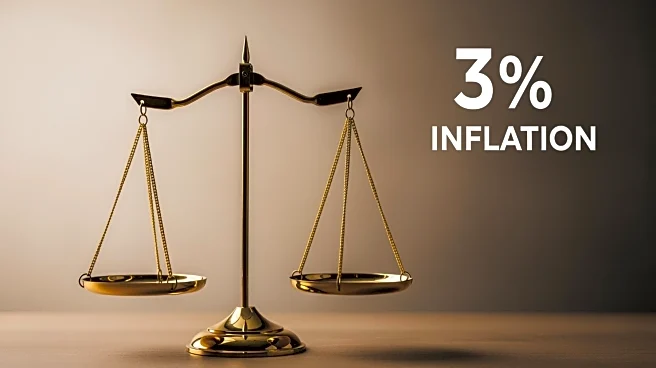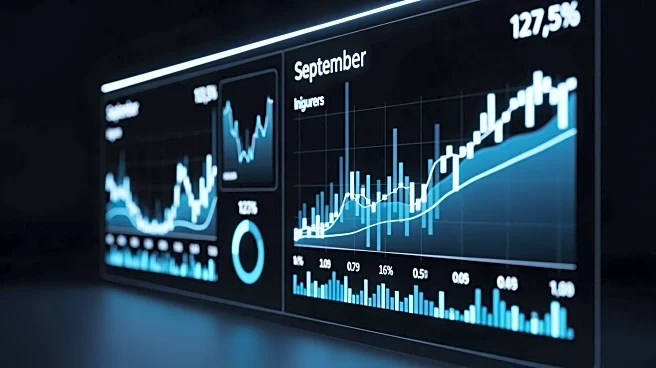What's Happening?
The Federal Reserve is expected to implement quarter-point interest rate cuts at its upcoming meetings, following a report indicating that U.S. consumer inflation rose less than anticipated in September.
The Consumer Price Index increased by 3.0% over the past year, slightly below the 3.1% forecasted by economists. This data has led traders to predict a series of rate cuts, with futures contracts showing near certainty of a reduction to a policy-rate range of 3.75%-4.00% at the next meeting. Analysts suggest that the Fed's decision to ease borrowing costs is unlikely to reignite inflation, providing comfort to even its more hawkish policymakers.
Why It's Important?
The anticipated rate cuts by the Federal Reserve are significant as they aim to support the labor market without exacerbating inflation. This move could have broad implications for the U.S. economy, potentially stimulating economic activity by making borrowing cheaper for businesses and consumers. However, it also reflects ongoing concerns about economic growth and inflation stability. Stakeholders such as investors, businesses, and policymakers will closely monitor these developments, as they could influence financial markets and economic strategies.
What's Next?
The Federal Reserve's upcoming meetings will be crucial in determining the trajectory of U.S. monetary policy. With traders betting on further rate cuts in December and January, the central bank's actions will be pivotal in shaping economic expectations. Market participants will be watching for any shifts in the Fed's approach, particularly in response to evolving economic indicators and inflation data.











